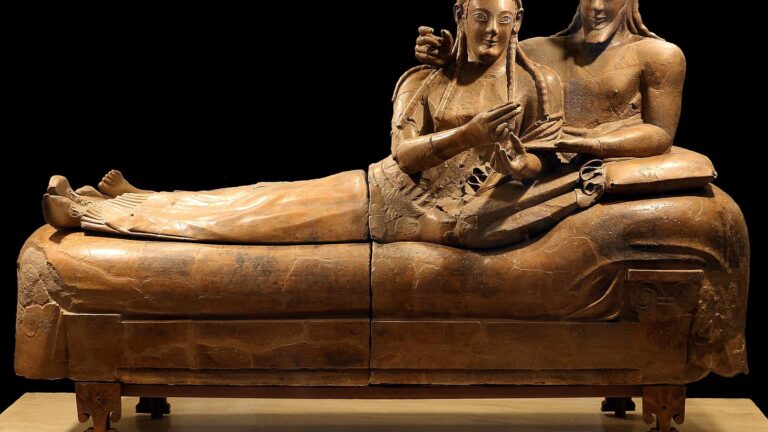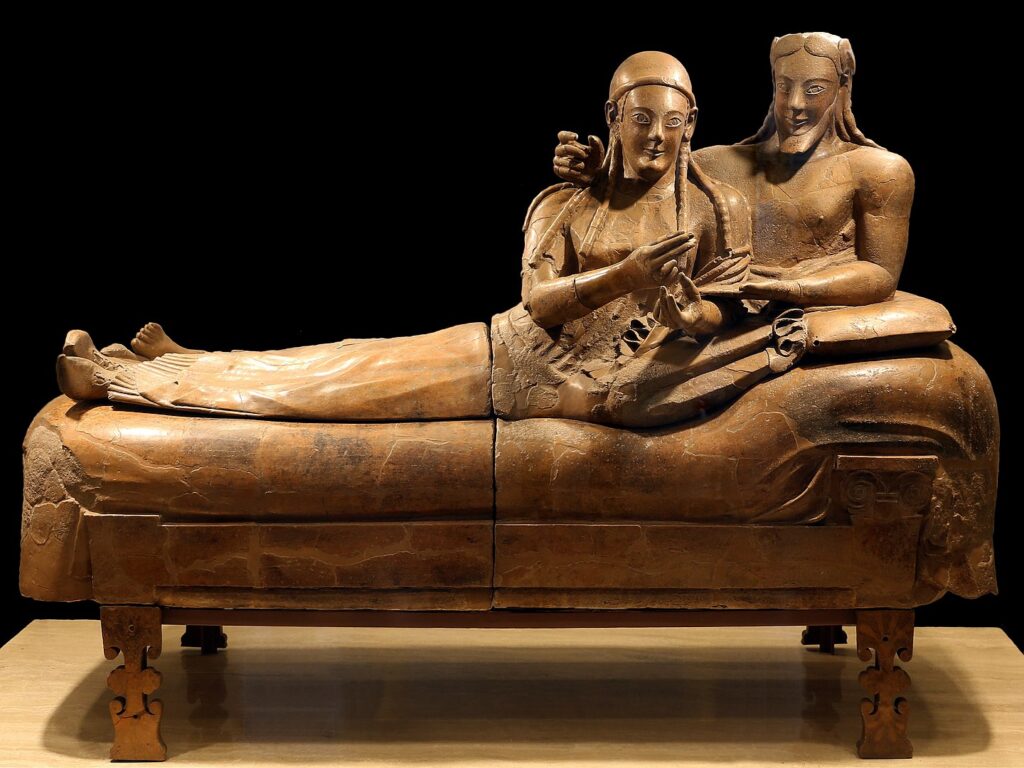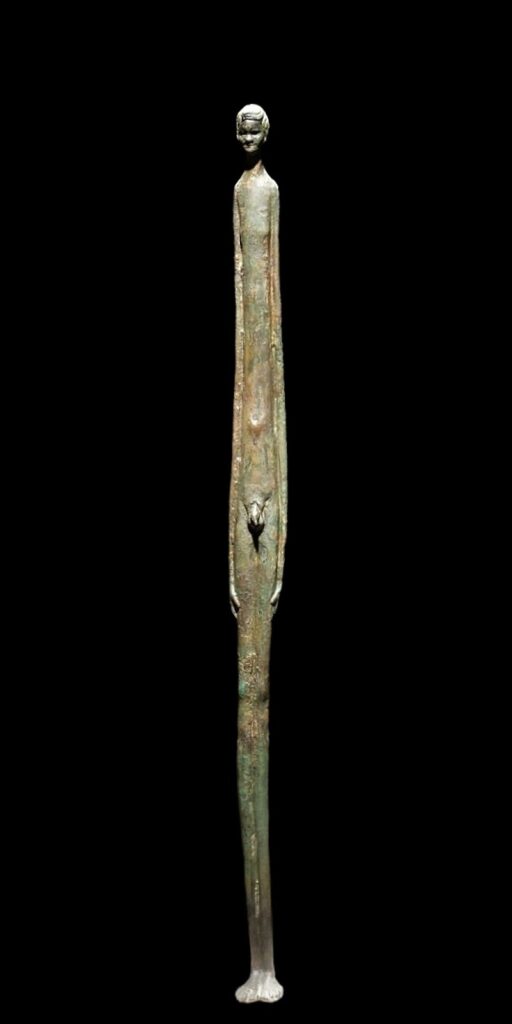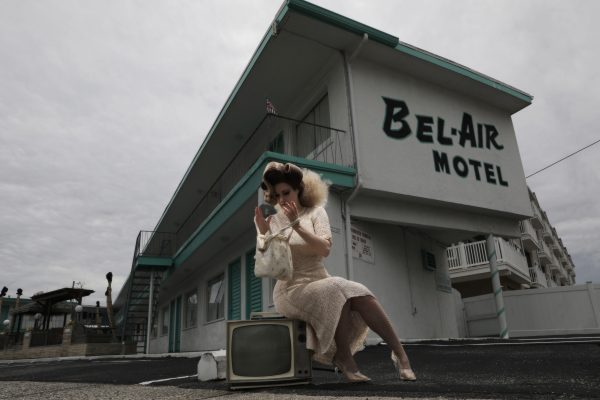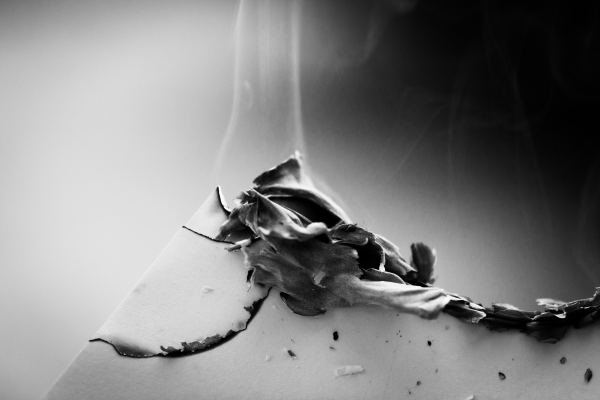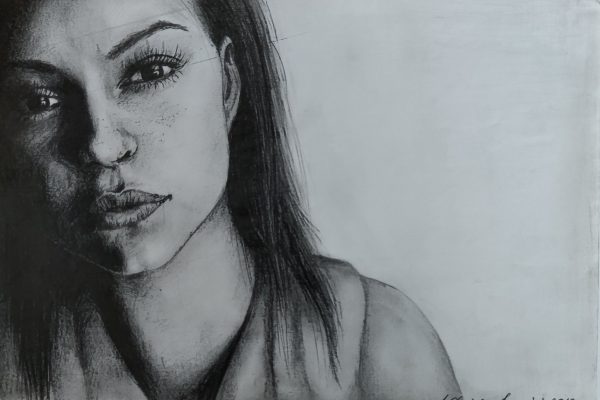The Etruscans were an ancient people living in Italy, who prospered between the 8th and 7th centuries BC, of Lydian origin from Anatolia, that is, present day Turkey. Like ancient Egypt, the Etruscan culture, which is distinguished by oriental influences, testifies to a deep religiosity and obsession with death. Etruscan art, mainly of a funerary nature, was used to decorate the interior of tumuli with frescoes for the burial of the dead. The Tumuli were grouped together in a necropolis, the most famous of which are : Populonia, Monterozzi and Cerveteri.
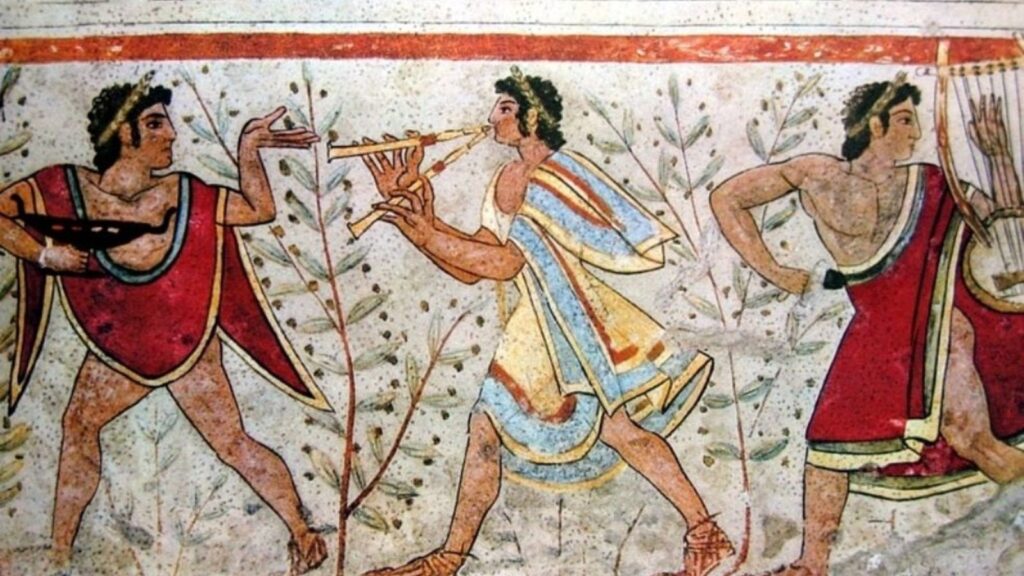
The frescoes, undeniably inspired by Aegean art, show us a joyful people where humans feasting at funeral banquets or participating in funeral games, intermingle with land and aquatic animals, as well as plants in a natural setting. It was during the 5th century BC that the Etruscans were subjected and then invaded by the Romans who would copy the architectural technical procedures such as : the arch and the vault,discovered within the tumuli, as well as temples built in brick and wooden, now missing due to their fragility ; and will be inspired by Etruscan paintings and frescoes, which they will reproduce on the walls of the houses and temples of Pompeii in the 1st century BC. The “tumulus” is an architectural construction both civil and religious, whose domed roof is covered with earth forming a small hill. The Etruscan funerary architecture imitates the houses and villas of the living, whose walls are decorated with paintings and frescoes in bright, warm and shimmering colors, creating a festive and hospitable atmosphere.
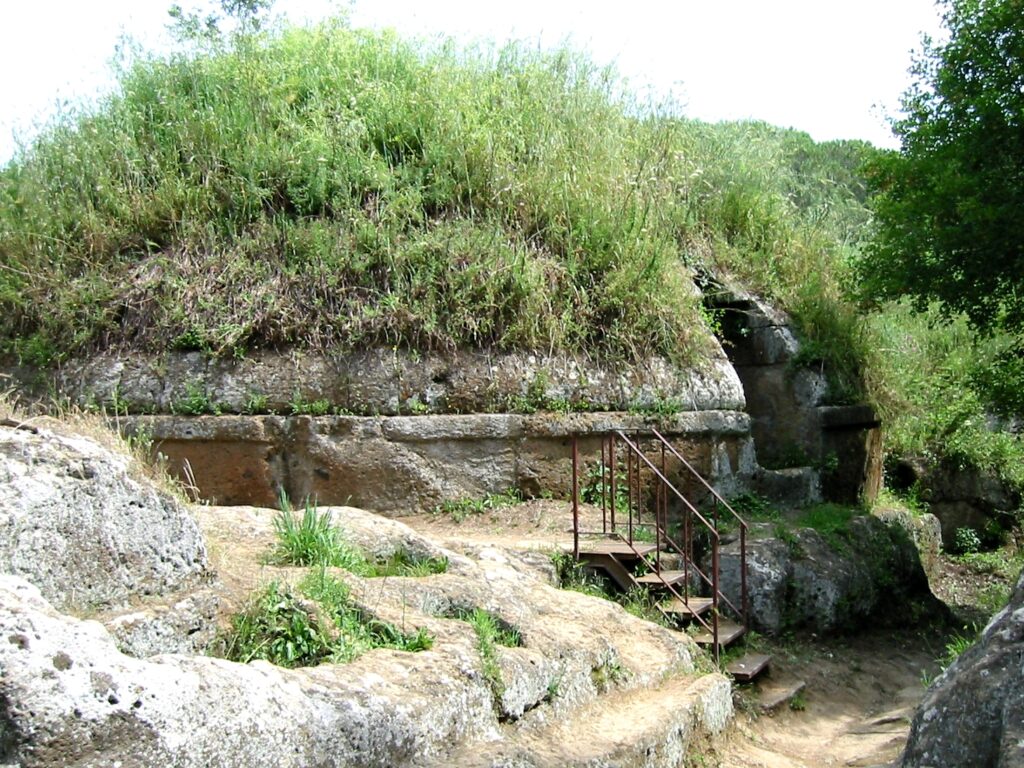
In Etruscan Art, the statutory is fundamentally funerary in nature and indicates to us the societal way of life of this mysterious people often overlooked. We find
in Etruscan sculptural art two artistic styles. The first style concerns sculptures marked with realism as for the terracotta and bronze sarcophagi representing
the deceased half-reclining, most often accompanied by his spouse, even if the latter had not died, the sarcophagus never containing the spoils of the couple.
This semi lascivious and intimate attitude, imbued with gentleness, underlined by a singular smile, was the posture adopted by the Etruscans for meals, which
the Romans subsequently imitated. The Etruscans displayed a marvelous skill in the technique of bronze sculpture. The second style concerns the sculptures of
animals or fantastic beings such as chimeras or even the strange votive statuettes with the appearance of threadlike silhouette discovered by Volterra, named “evening shadow” by Gabriele D’Annunzio and which aroused the inspiration from 20th century sculptors such as Modigliani, Giacometti and Brancusi.
© Patrick QUENUM (All rights reserved)
This article is an extract from the book “Classic Art : Etruscan, Greek and Roman” published
by editions – Independently published –

